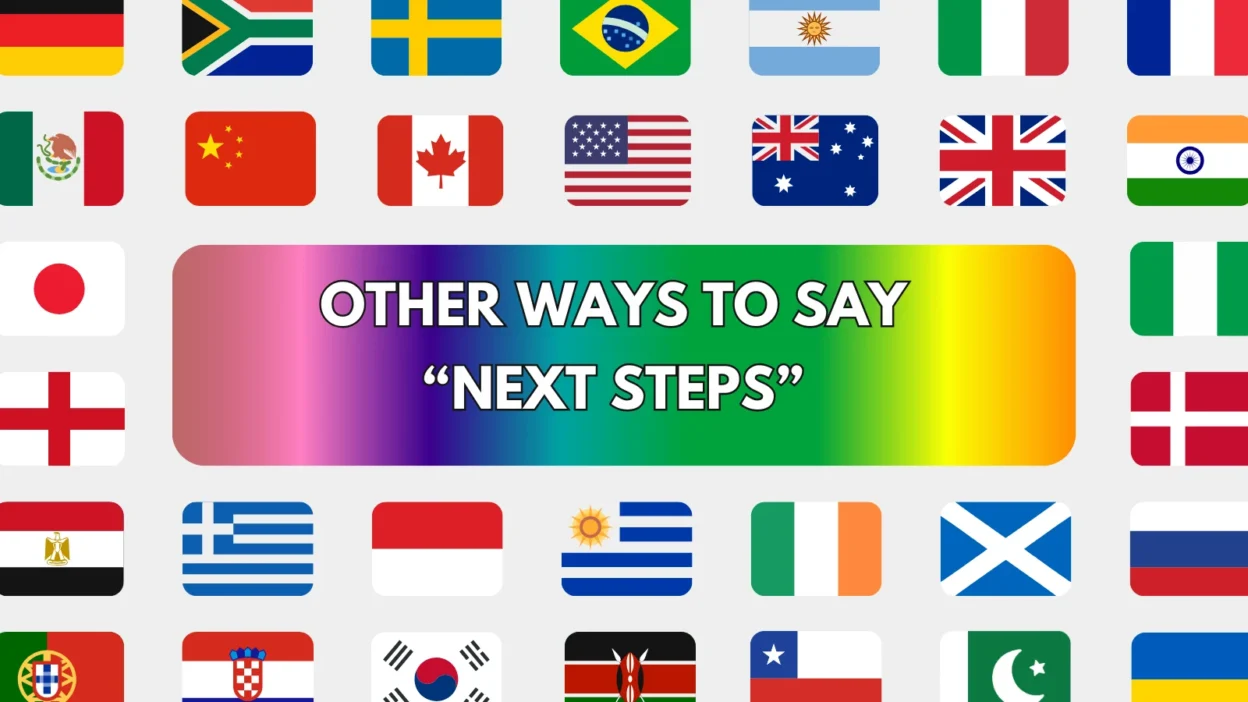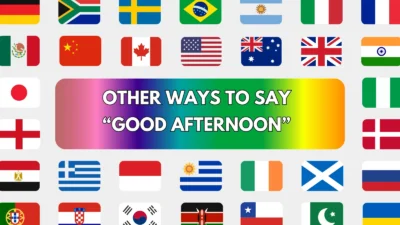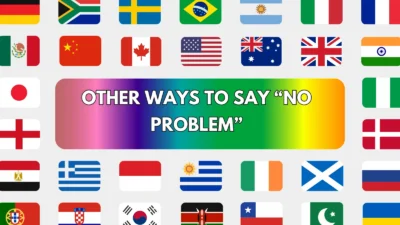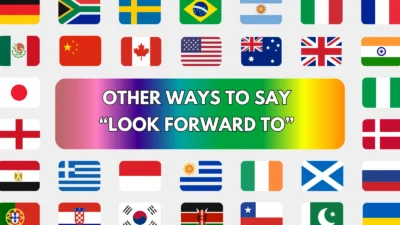The phrase “Next steps” is a popular expression in professional and business communication. It helps clarify what actions will follow a meeting, project update, or discussion. While it’s useful and to the point, using it repeatedly can become dull or overly formal. A variety of alternatives can help you sound clearer, friendlier, or more engaging—depending on the tone and situation.
Below are 25 versatile alternatives to “Next Steps” that can sharpen your communication and give your messages more impact.
1. Action Plan
Meaning:
A structured list of tasks or goals to be completed.
Detailed Explanation:
“Action plan” is ideal when you want to outline specific duties and deadlines after a meeting or decision.
Scenario Example:
Let’s develop an action plan to meet our Q3 targets.
Best Use:
Project management, team updates.
Tone:
Organized, strategic.
2. What’s Coming Up
Meaning:
A friendly way to highlight what will happen next.
Detailed Explanation:
This phrase is casual yet informative, useful in newsletters or team chats.
Scenario Example:
Here’s what’s coming up next week in our design sprint.
Best Use:
Internal updates, informal communication.
Tone:
Light, conversational.
3. The Road Ahead
Meaning:
A metaphorical way of discussing future progress or plans.
Detailed Explanation:
This phrase gives a visionary feel and works well for long-term planning.
Scenario Example:
Let’s take a look at the road ahead for our product rollout.
Best Use:
Strategy meetings, leadership communication.
Tone:
Inspirational, forward-looking.
4. Upcoming Tasks
Meaning:
Tasks or actions scheduled to happen next.
Detailed Explanation:
Clear and simple, this is great for project tracking or agendas.
Scenario Example:
Here are the upcoming tasks for this sprint.
Best Use:
Team updates, productivity tools.
Tone:
Straightforward, professional.
5. Follow-Up Actions
Meaning:
Activities that need to be done after a discussion or event.
Detailed Explanation:
“Follow-up actions” emphasizes accountability and follow-through.
Scenario Example:
Let’s outline our follow-up actions from today’s meeting.
Best Use:
Client meetings, performance reviews.
Tone:
Formal, results-driven.
6. Moving Forward
Meaning:
A transition phrase that introduces what will happen next.
Detailed Explanation:
This works well at the end of a discussion to shift attention to future progress.
Scenario Example:
Moving forward, we’ll focus on the final development phase.
Best Use:
Emails, meetings, business communication.
Tone:
Positive, transitional.
7. Action Items
Meaning:
Specific tasks assigned to individuals or teams.
Detailed Explanation:
Often used in meeting minutes to show who’s responsible for what.
Scenario Example:
Here are the action items from today’s stand-up.
Best Use:
Team meetings, agendas.
Tone:
Task-oriented, efficient.
8. Next Moves
Meaning:
The immediate decisions or steps following a current situation.
Detailed Explanation:
A flexible phrase that adds a slightly casual but clear tone.
Scenario Example:
Our next moves include reviewing the data and presenting it to stakeholders.
Best Use:
Collaborative discussions, team strategy.
Tone:
Casual-professional, direct.
9. To-Do List
Meaning:
A list of items to be completed.
Detailed Explanation:
Best when you want to break down upcoming responsibilities in a simple format.
Scenario Example:
Let’s create a to-do list to finish this module.
Best Use:
Informal planning, task management.
Tone:
Casual, functional.
10. Upcoming Milestones
Meaning:
Important goals or events to be reached soon.
Detailed Explanation:
Highlights bigger-picture goals rather than small tasks.
Scenario Example:
Our upcoming milestones include beta launch and user testing.
Best Use:
Project timelines, stakeholder updates.
Tone:
Aspirational, goal-focused.
11. Plan of Action
Meaning:
A sequence of steps laid out to achieve a goal.
Detailed Explanation:
Formal and focused, used when structure is key.
Scenario Example:
Here’s our plan of action to implement the new policy.
Best Use:
Reports, executive briefings.
Tone:
Structured, formal.
12. Projected Steps
Meaning:
The expected steps that will be taken next.
Detailed Explanation:
Helpful when communicating anticipated outcomes or timelines.
Scenario Example:
The projected steps include final approval and testing.
Best Use:
Forecasting, planning documents.
Tone:
Neutral, predictive.
13. The Next Phase
Meaning:
The upcoming stage of a larger process.
Detailed Explanation:
Used for project lifecycles or major transitions.
Scenario Example:
We’re entering the next phase of product development.
Best Use:
Project timelines, updates.
Tone:
Professional, organized.
14. Key Deliverables
Meaning:
The essential outputs or results expected.
Detailed Explanation:
Helps keep focus on outcomes and responsibilities.
Scenario Example:
Let’s define the key deliverables for this client project.
Best Use:
Client presentations, goal-setting.
Tone:
Result-focused, businesslike.
15. Upcoming Priorities
Meaning:
Tasks or goals that will soon require attention.
Detailed Explanation:
This emphasizes what’s important and urgent.
Scenario Example:
Our upcoming priorities include addressing customer feedback.
Best Use:
Team syncs, planning sessions.
Tone:
Organized, proactive.
16. Implementation Plan
Meaning:
A detailed layout of how something will be executed.
Detailed Explanation:
Best used for turning strategy into action.
Scenario Example:
We’ll share the implementation plan by Friday.
Best Use:
Project rollout, strategic planning.
Tone:
Professional, structured.
17. Course of Action
Meaning:
The path to follow to achieve a specific goal.
Detailed Explanation:
This phrase sounds formal and decisive.
Scenario Example:
Let’s agree on a course of action before we move forward.
Best Use:
Problem-solving meetings, formal discussions.
Tone:
Serious, professional.
18. What Happens Next
Meaning:
A simple way to preview upcoming events or steps.
Detailed Explanation:
Casual and approachable, ideal for clear explanations.
Scenario Example:
Here’s what happens next after you submit your application.
Best Use:
Customer support, onboarding.
Tone:
Informative, approachable.
19. Immediate Actions
Meaning:
Tasks that need to be done right away.
Detailed Explanation:
Helps communicate urgency and focus on short-term tasks.
Scenario Example:
Our immediate actions are to fix the bug and notify the client.
Best Use:
Issue response, urgent planning.
Tone:
Urgent, precise.
20. Forward Steps
Meaning:
The steps taken as progress continues.
Detailed Explanation:
A modern and slightly softer alternative to “next steps.”
Scenario Example:
Here are our forward steps after the beta review.
Best Use:
Follow-ups, planning emails.
Tone:
Progressive, optimistic.
21. Execution Plan
Meaning:
A detailed guide to carrying out a strategy.
Detailed Explanation:
Often used in high-level planning documents or presentations.
Scenario Example:
We’ve finalized the execution plan for our digital campaign.
Best Use:
Marketing, strategic rollouts.
Tone:
Professional, tactical.
22. Scheduled Tasks
Meaning:
Tasks that have been planned with specific timeframes.
Detailed Explanation:
Good for communicating what’s already organized and assigned.
Scenario Example:
Here are your scheduled tasks for this week.
Best Use:
Project management, team dashboards.
Tone:
Clear, organized.
23. Upcoming Steps
Meaning:
The actions that will soon take place.
Detailed Explanation:
Almost identical to “next steps,” but slightly more conversational.
Scenario Example:
Here are the upcoming steps for the proposal review.
Best Use:
Client communication, updates.
Tone:
Neutral, friendly.
24. Tactical Plan
Meaning:
A focused plan for short-term, specific actions.
Detailed Explanation:
Works well when precision and speed are required.
Scenario Example:
Let’s draft a tactical plan for the product launch week.
Best Use:
Marketing, execution meetings.
Tone:
Efficient, strategic.
25. The Plan Moving Forward
Meaning:
The strategy or series of steps from this point onward.
Detailed Explanation:
Combines clarity and optimism, often used in summaries.
Scenario Example:
Here’s the plan moving forward to wrap up Phase 2.
Best Use:
Project updates, end-of-meeting recaps.
Tone:
Optimistic, professional.
Conclusion
While “Next Steps” is a reliable phrase, exploring a variety of alternatives helps you communicate more clearly, creatively, and appropriately across different settings. From casual chats to formal project updates, these 25 alternatives provide flexibility and impact for every kind of communication.




